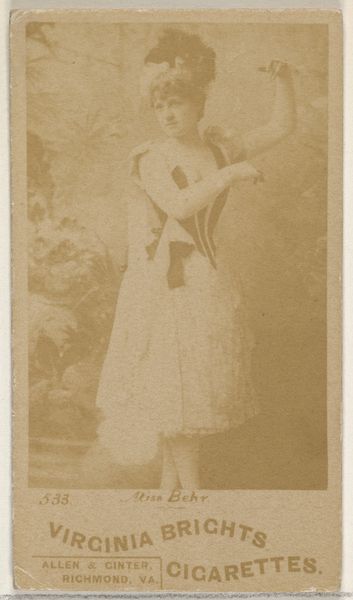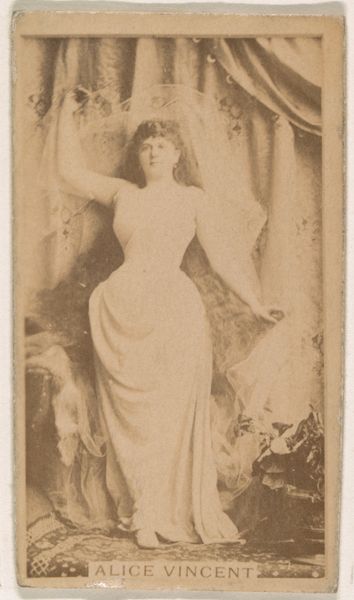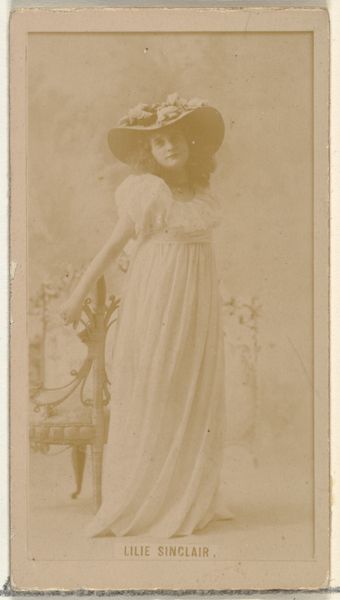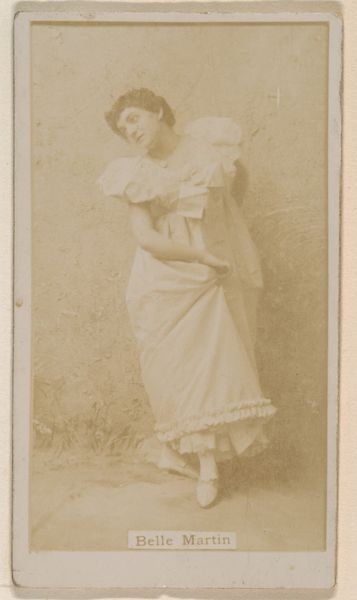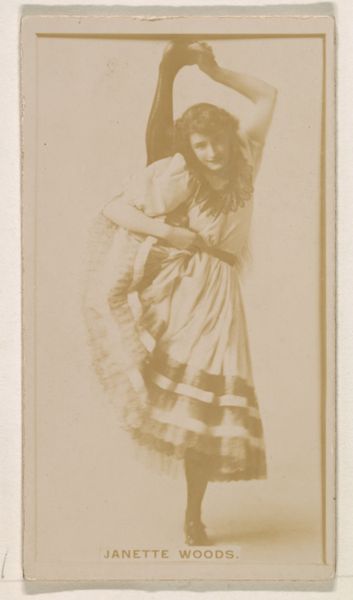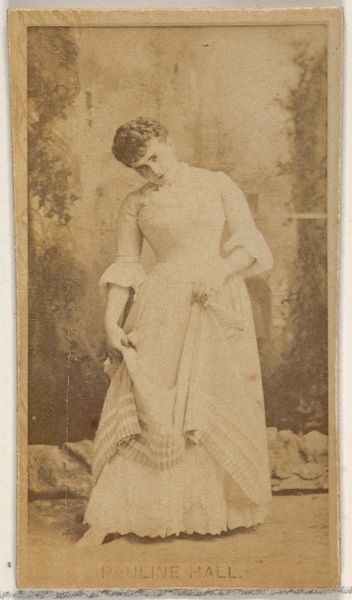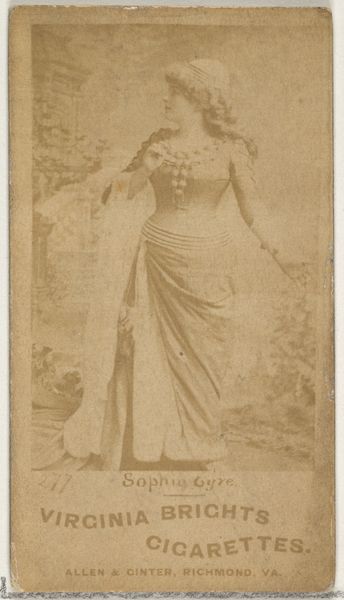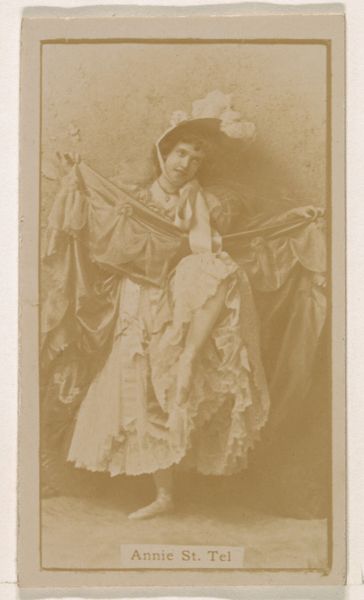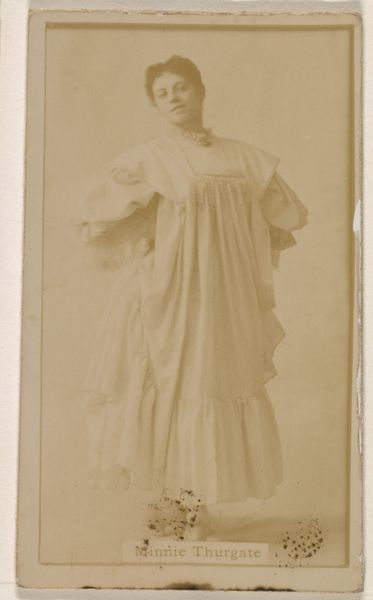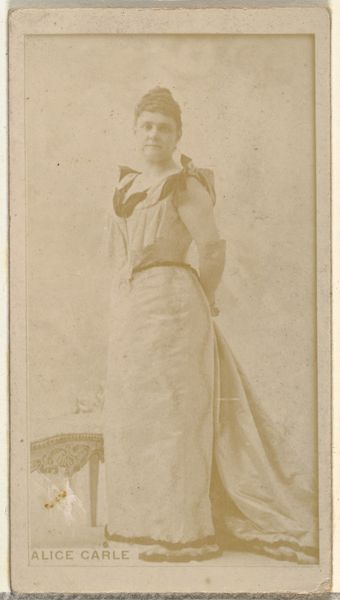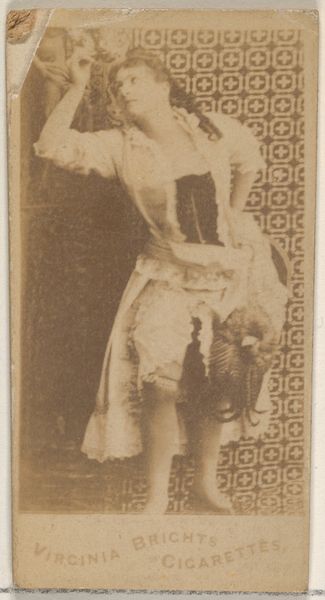
Alice May, from the Actresses series (N245) issued by Kinney Brothers to promote Sweet Caporal Cigarettes 1890
0:00
0:00
print, photography, albumen-print
#
portrait
# print
#
photography
#
genre-painting
#
albumen-print
Dimensions: Sheet: 2 1/2 × 1 7/16 in. (6.4 × 3.7 cm)
Copyright: Public Domain
Curator: This albumen print is a trade card from around 1890, part of the "Actresses" series (N245) put out by Kinney Brothers to market Sweet Caporal Cigarettes. It features Alice May, a popular stage performer of the time. Editor: It's a rather ethereal portrait, wouldn't you say? Almost ghostly in its pale sepia tones. Her pose, with the wide-brimmed hat and flowing dress, gives it a sense of breezy elegance. Curator: Indeed. Albumen prints like these were created by coating paper with albumen from egg whites, which created a smooth surface for detailed photographic impressions. Given they were effectively promotional throw-aways included in cigarette packs, it's interesting to consider the labour-intensive production involved. Think of all those eggs! And what did they do with the yolks? Editor: Ha! And beyond the sheer scale of production, it’s critical to consider the deliberate framing of femininity on display here. Tobacco companies then, like now, used images of idealized women to associate their product with beauty, glamour and allure. Alice May is effectively transformed into a consumable commodity. Curator: Precisely. The actress’s celebrity status and the reach of mass-produced printed images intersect to form and distribute ideas about idealized beauty and consumerism. One wonders, did May have any say about its design and message? Did she earn anything beyond maybe an initial sitting fee? Editor: These kinds of trade cards would have circulated widely, shaping public perception of beauty, and normalizing harmful products like cigarettes in the process. Also, let's be honest, who benefited? The male executives pulling the strings behind the scenes! The whole process involved both objectification and exploitation. Curator: The fact that they've survived speaks to a continued interest in collecting as a means to define identity, gender and class—a cultural consumption with profound socio-economic implications. But what I still find fascinating are those now slightly faded details... like the visible weave of the ribbon at the waist, subtle gradations achieved by layering chemistry upon physical stock, mass produced and simultaneously deeply precious now for those very signs of its handmade crafting and aging. Editor: Well, in both what it reveals, and what it obscures, this seemingly simple little portrait gives us quite a lot to chew on about commerce, gender, and power dynamics, wouldn't you say? Curator: Absolutely. It highlights that behind every product lies a complex network of human labor, desires, and, often, exploitation.
Comments
No comments
Be the first to comment and join the conversation on the ultimate creative platform.
